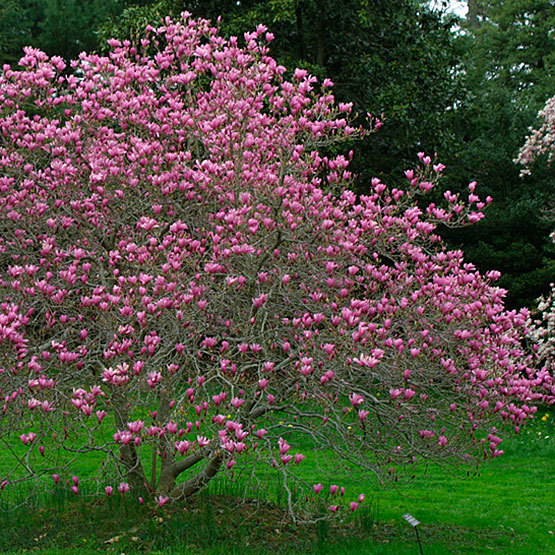
These woodland trees and shrubs are native to East Asia and eastern North America. Their highly-visible, cup-, saucer-, star-, or goblet-shaped flowers often lavishly cover the naked branches of deciduous species, adding drama to the landscape; evergreen species provide a rich, green backdrop to the waxy blossoms. Magnolias bloom in a wide range from early spring through late summer. They are well-suited to groves, and naturalistic and specimen plantings.
Noteworthy CharacteristicsWith their showy blossoms that seem to break the long spell of winter, these glorious trees and shrubs exhibit a garden presence that radiates with visual, aromatic, and architectural qualities.
CareGrow in moist, well-drained, preferably acidic to neutral soil in sun or partial shade; they do not tolerate wet feet. Magnolia flowerbuds are susceptible to late-season frosts; shelter large-leaved species from windy locations. Prune trees and deciduous shrubs in late winter or late summer to prevent bleeding of sap; prune minimally to maintain a healthy framework. Minimally prune evergreen shrubs in mid-spring, trimming back to deadhead or maintain symmetry.
PropagationSow seeds in autumn or stratify to hasten germination. For deciduous magnolias, root softwood cuttings in early summer; for evergreen species, root semi-ripe cuttings from late summer through late fall. Magnolias can be layered in early spring, grafted in winter, and propagated by bud in summer.
ProblemsBacterial leaf spot, spot anthracnose, canker, dieback, butt rot, powdery mildew, anthracnose, fungal spots, weevils, snails, scale insects, thrips, planthoppers.






























